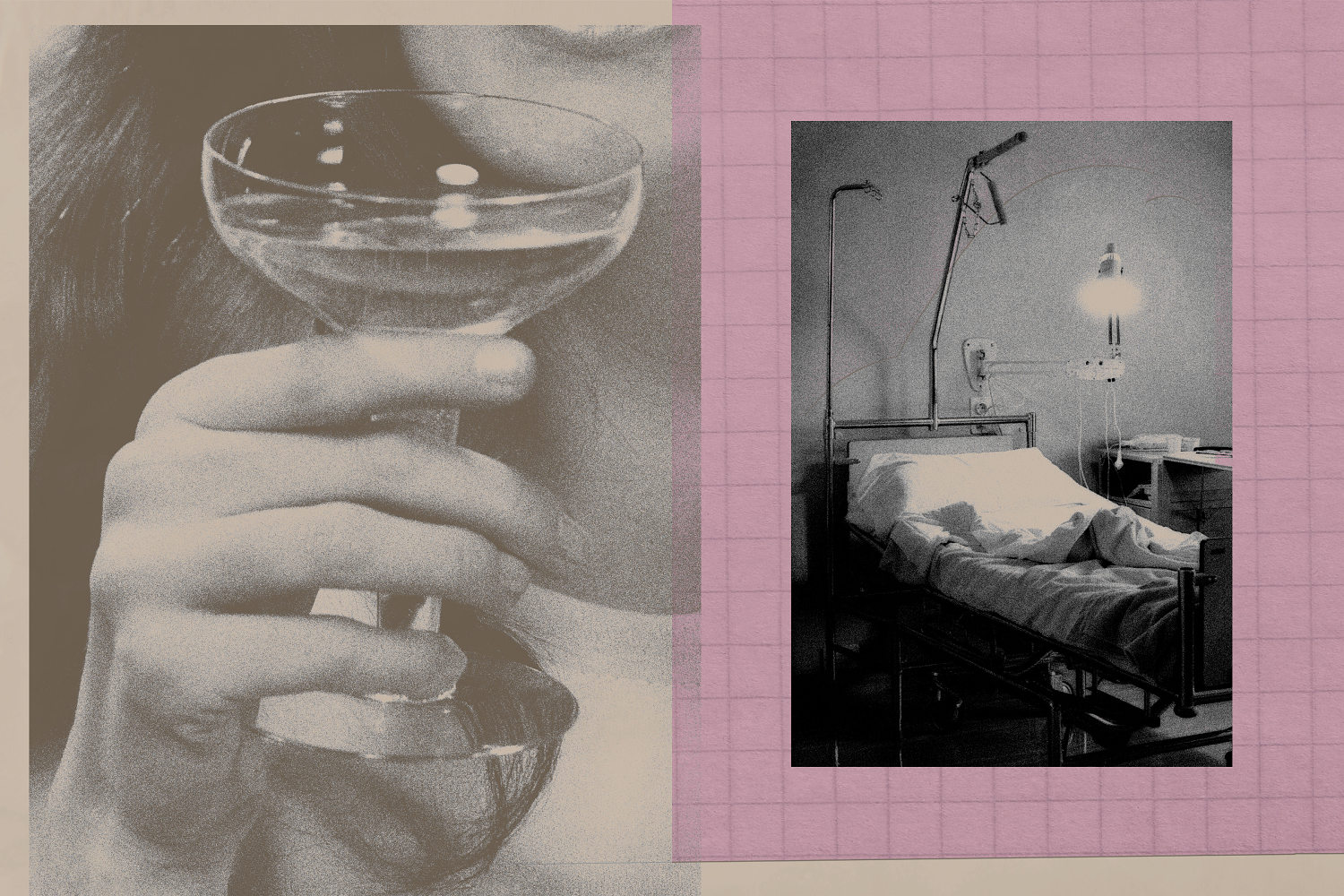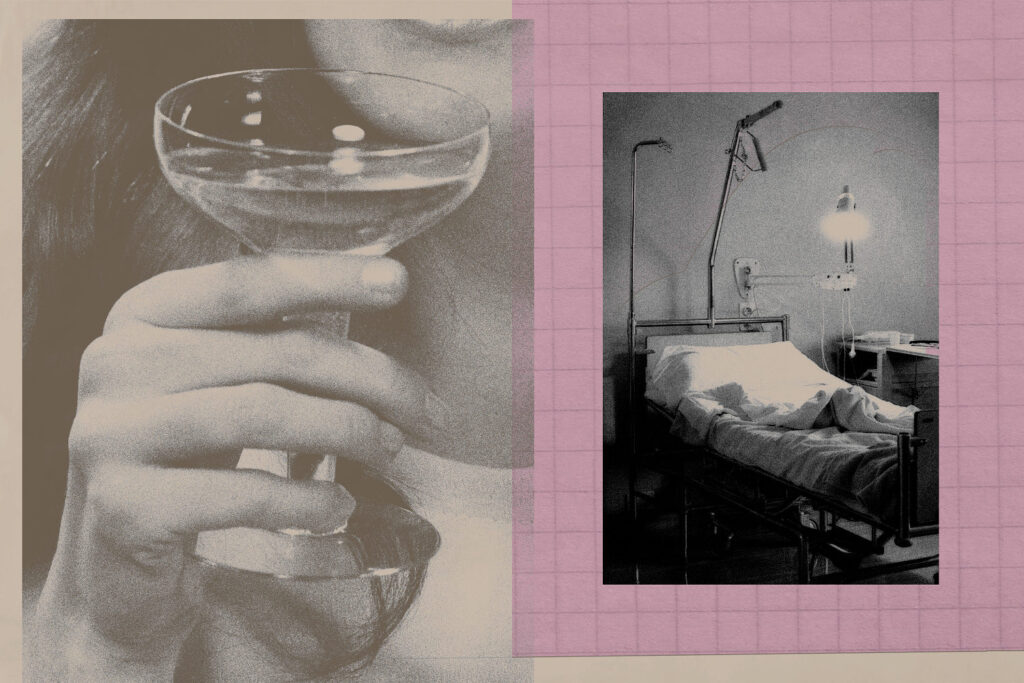
The risk that alcohol poses to women’s health has mounted over the last two decades, as they have begun to drink more frequently and in larger quantities.
Alcohol-related deaths among women more than doubled from 1999 to 2020. And deaths from alcohol-related hepatitis, a disease resulting in severe liver inflammation, nearly tripled among women over the same time period.
A new study, published Wednesday in the medical journal Clinical Gastroenterology and Hepatology, similarly points to an elevated risk of alcohol-related liver disease among women. The condition encompasses various types of liver damage due to excessive alcohol consumption. It spans early-stage inflammation to severe scarring, known as cirrhosis, which can lead to liver failure.
Women are more susceptible than men to alcohol-related liver disease for several reasons. For one, their bodies tend to have less water weight and a higher percentage of body fat. That combination increases the concentration of alcohol in their blood, which the liver then has to process. Compared with men, women also naturally have lower levels of an enzyme called alcohol dehydrogenase, which helps the body metabolize alcohol. That again leads to higher blood alcohol concentrations.
Those physiological differences, combined with the sharp increase in alcohol use and binge drinking, have made women particularly vulnerable to alcohol-related illnesses.
“Historically, there’s been differences in prevalence rates [of alcohol use] between men and women. And essentially, that gap has now closed and the ratio between men and women’s drinking is almost at 1 to 1,” said Sherry McKee, director of the Yale SCORE Program on Sex Differences in Alcohol Use Disorder.
Changes in women’s lifestyles have created increasing opportunities to consume alcohol, McKee said. Today’s young adults drink less compared with previous generations, but there are now more women in college than men — and college is generally associated with increased alcohol consumption, she said.
“You pair that with the fact that women are delaying childbirth, delaying marriage — it just gives more space for women to continue drinking in the post-college years,” McKee said.
Women’s heavy alcohol consumption is most common in midlife, said Katherine Keyes, an epidemiology professor at Columbia University’s Mailman School of Public Health. Some researchers attribute the trend to stress or office drinking culture, but Keyes said the main reason women are drinking more is for fun. She noted that wine and spirits are often marketed to women as luxury goods or methods of relaxation.
Experts said more awareness of the health risks of drinking could help encourage women to scale back.
“It isn’t the case that every single person who drinks heavily will get liver disease from it. But we do know that a proportion of those folks do — about 25 to 30%,” said Dr. Jessica Mellinger, a senior staff physician at Henry Ford Health, a Michigan-based health system. The more a person drinks, she added, the greater likelihood they have of getting alcohol-related liver disease of any stage.
The study published Wednesday found that heavy drinkers are developing alcohol-related liver disease at more than double the rate compared with 20 years ago. The researchers suspect that’s because people vulnerable to liver disease — including women and those with obesity or diabetes — are drinking more compared with decades past.
“The modern American drinker looks different than it did 20 years ago,” said Dr. Brian Lee, the study’s lead author and a hepatologist at Keck Medicine of the University of Southern California.
The researchers used data from a national, government-led survey to measure drinking habits and liver health in the U.S. They characterized heavy drinkers as men who consumed at least 30 grams of alcohol per day — roughly two standard drinks — and women who consumed at least 20 grams per day.
Among heavy drinkers, the risk of significant liver damage more than doubled over a 22-year period, from nearly 2% in 1999-2004 to more than 4% in 2013-20.
The rate of metabolic syndrome — conditions like obesity or high blood pressure that increase the risk of heart disease, diabetes and stroke — among heavy drinkers also increased during that time, from 26% to nearly 38%. Both obesity and Type 2 diabetes can cause fat to build up in the liver, thereby elevating the risk of liver disease.
“It could be the situation of a perfect storm. We have an increase in alcohol consumption … alongside changing prevalence of these other [health] conditions,” Keyes said.
Lee said it’s important for people to be honest with their doctors about their alcohol intake, so that doctors can decide whether to screen them for liver disease.
“Your risk of liver disease might be higher than you think,” he said. “The reality is that liver disease is silent, and most people — even with cirrhosis, which is end-stage liver disease — have no symptoms at all. I always say it’s a blessing and a curse that you need very little healthy amounts of liver to feel perfectly fine.”
Keyes said women in particular tend to wait longer to seek medical care for heavy drinking due to social stigma.
“It’s really becoming this hidden epidemic where women wait too long to see someone about a really serious, alcohol-related condition,” she said.
